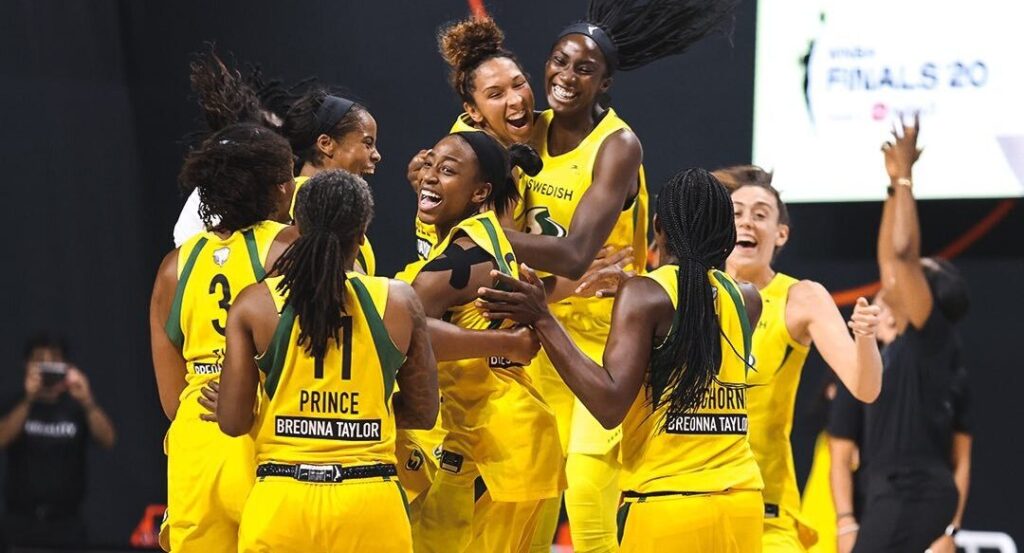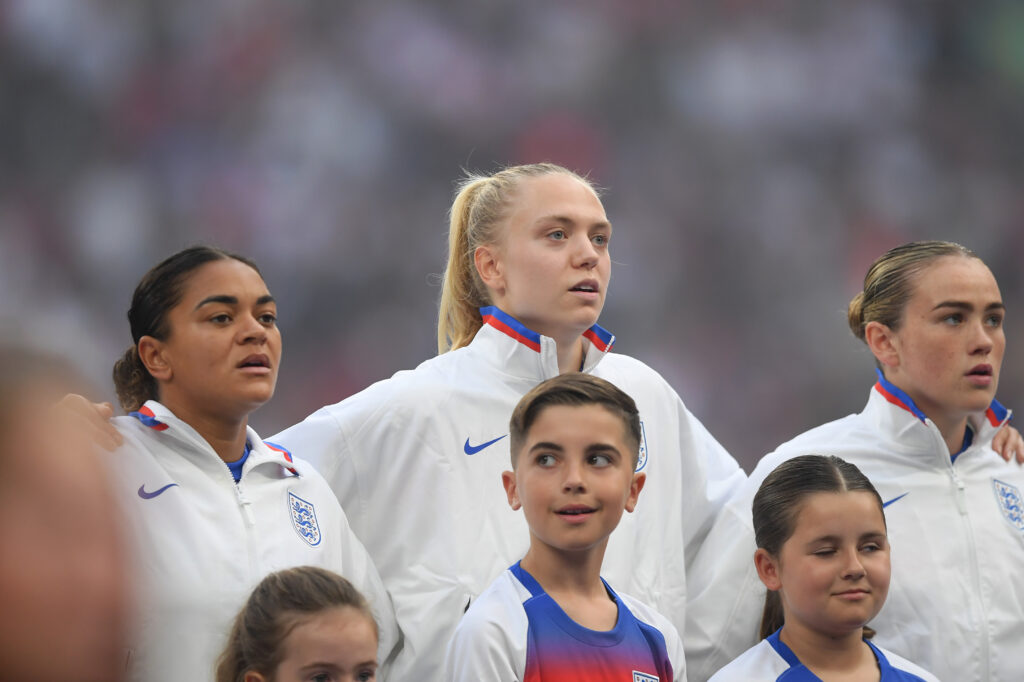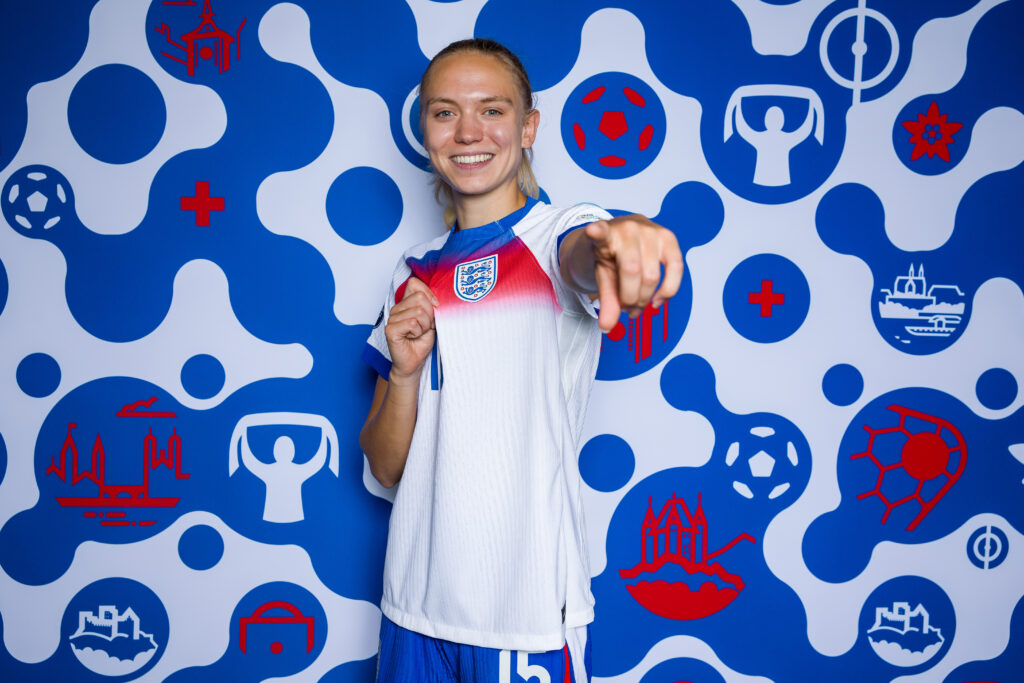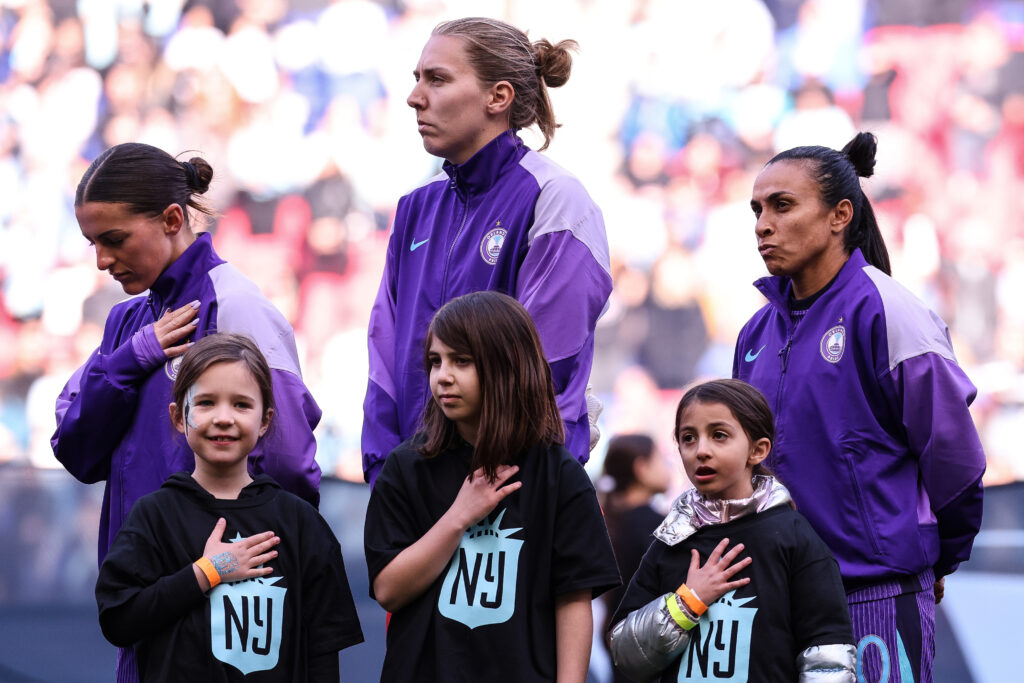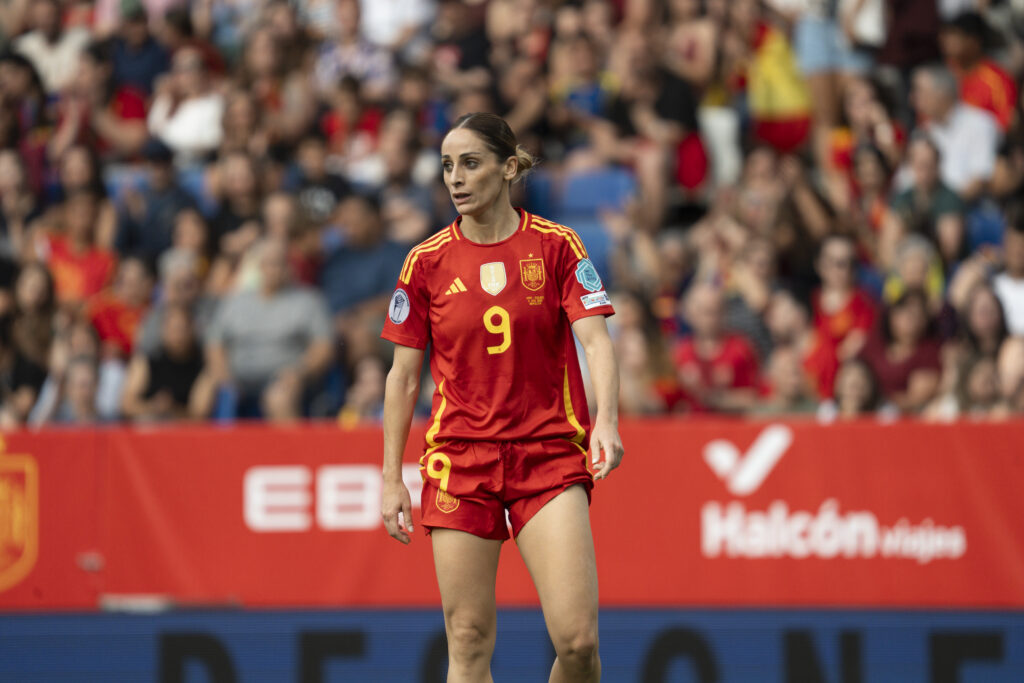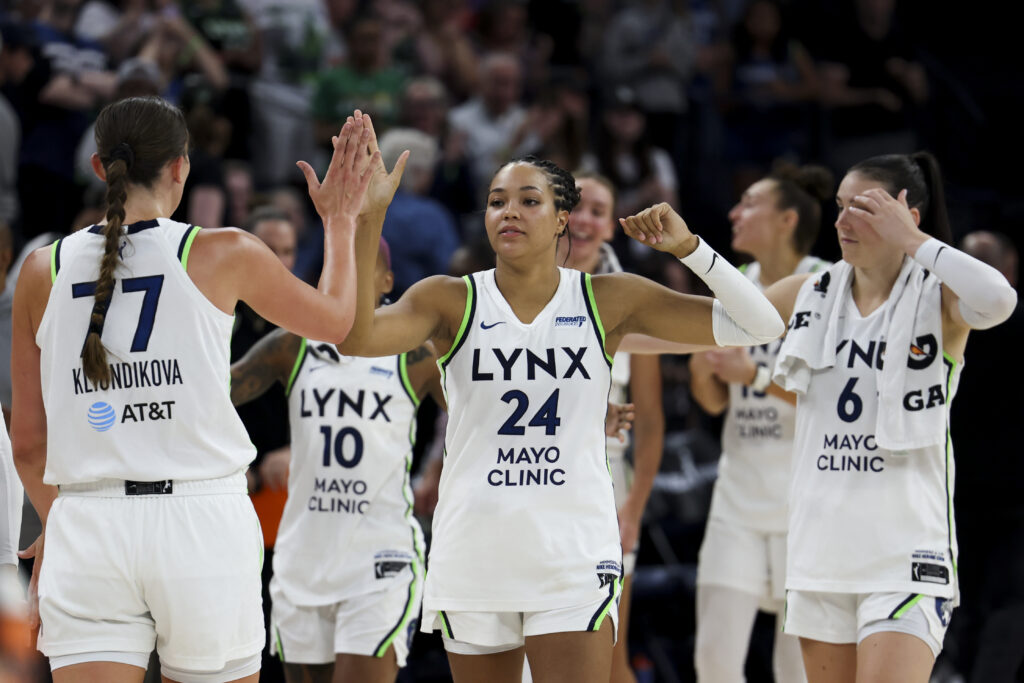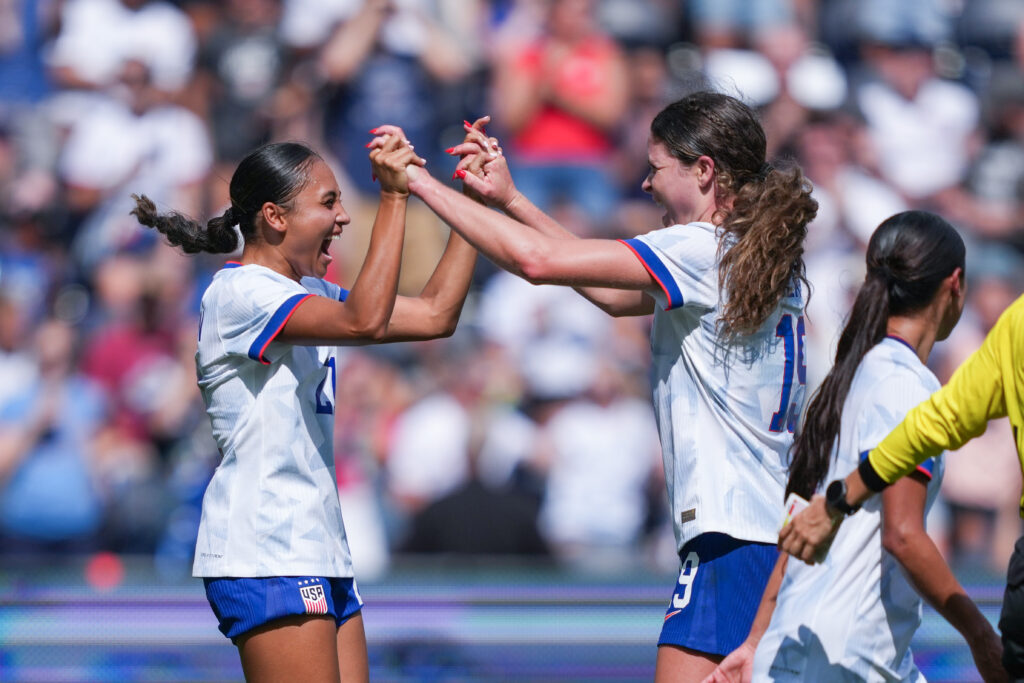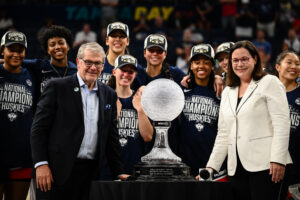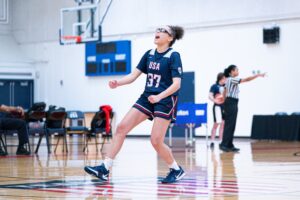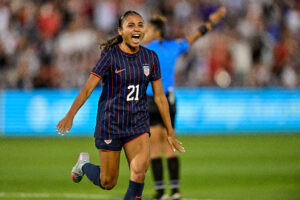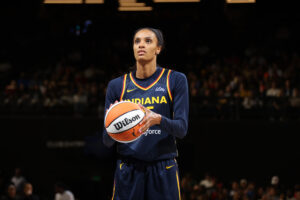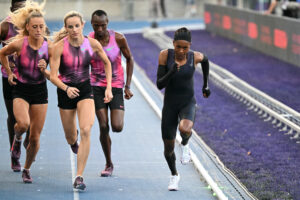Well, that was fun.
With time to process everything that went down in this WNBA season, that was the first thought that came to mind. The season actually happened! There was a champion!
Not only that, but the players took advantage of the stage they earned in Bradenton and turned it into their own messaging platform for Black Lives Matter and Say Her Name, all while driving a voter registration campaign and increasing television viewership by 68%. For everyone watching at home, the season was fantastic. From network broadcasts to those on streaming platforms, the fans saw great basketball, and for all of the worries about opt-outs and lack of rest days, this may have been the best season ever.
Here’s why.
Offense was better than ever
Two years ago, WNBA offense peaked. The league average offensive rating (an estimate of the points scored per 100 possessions) was 105.6. While that number dipped ever so slightly to 104.4 in 2020 (the second highest in league history), every other significant offensive number was up.
The league’s 44.6% field goal percentage was the best in the its 24 year history. The 34.6% 3-point percentage was the highest since 2013, when the 3-point line was set at its current distance of 22 feet and 1 3⁄4 inches, and seventh-best ever. The 49.2% 2-point field goal percentage was the highest ever. The 80.7% free throw conversion rate was the highest ever. The 83 points per game was the highest ever.
And none of this was accomplished through isolation basketball either. The league tallied the fourth highest assist rate ever, with 62.7% of field goals coming off a pass.
Even without the numbers to back it up, it was clear from the proverbial “eye test” that offense was on the rise. Over the two months, there were some fantastic displays of individual offensive excellence. Courtney Vandersloot set the single-game assist record with 18 and ended the season as the first player to average double digit assists. In the playoffs, Sue Bird set a playoff record with 16 assists in Game 1 of the Finals.
HISTORY FOR SUE BIRD.
— SportsCenter (@SportsCenter) October 3, 2020
Bird sets a WNBA Finals record with 12 assists in a game ... and it’s only the third quarter ???? pic.twitter.com/5mT7z5eVDS
Veterans turned back the clock
Speaking of Sue Bird, the four-time WNBA champion showed she still has a lot left in the tank, even now that’s 40. Bird, along with Diana Taurasi and Angel McCoughtry, are three veteran hoopers still deserving of the spotlight. Somehow, in season 17, 16, and 10 respectively, each found new heights.
Taurasi made a career-high 4.1 3-pointers per 36 minutes. Her 17% defensive rebounds percentage was the second best of her Hall of Fame career, as was her 62.5% true shooting percentage. 2020 also saw her record her fourth highest win shares per 40 minutes.
As expected, Taurasi’s star shined even brighter in the playoffs. The 25.5 points and 7.5 assists across Phoenix’s two playoff games were both the highest of her career.
While McCoughtry is still looking for her first Finals win, to say nothing of a championship ring, she was a crucial addition for the Las Vegas Aces, without whom a runner-up season would not have been possible. Las Vegas lost Kelsey Plum to injury and Liz Cambage to opt out before the season even started, but still managed to reach the Finals. Once there, and without Sixth Woman of the Year Dearica Hamby, the Seattle juggernaut was just too much. That didn’t stop McCoughtry from giving it everything she had.
Her 51.8% from the field was the best of her career by four percent. And if that’s impressive, then her 47.1% from 3-point range is simply absurd. That number is 10% higher than her next best season.
McCoughtry also shot a career-best 88.2% from the free throw line, despite being an 80.1% shooter lifetime. While her minutes were down from her peak, her 25.9 points per 36 minutes was the second highest of her career, and in those minutes, she had a more positive impact than ever before, recording a career-best in win shares (0.288 per 40 minutes). Her rebound rate (14.5%), true shooting rate (61.1%) and player efficiency rating (29.1) were all the highest of her career, while her turnover rate (12.8%) was the lowest.
It shouldn’t be possible to improve every aspect of your game at this point in your career. But inside the bubble, McCoughtry proved she’s still well in her prime.
And then there’s the champion, Bird, who played the fewest minutes per game in the regular season of this trio while also missing 11 games with an injury. Unbothered, Bird’s 49.4% field goal percentage, 2.1 3-pointers a game and 46.9% 3-point percentage were all the best of her career.
And even as she became a more efficient and versatile scorer, Bird continued to orchestrate the Seattle offense. Her eight assists per 36 minutes tied for second best in her career. And in addition to the single-game playoff record for assists, she averaged 9.2 per game in the postseason, the highest of her career. Breanna Stewart might have Finals MVP, and rightfully so, but Sue Bird proved she’s still the one piloting the Storm’s offensive juggernaut.
While publicly undecided about her 2021 season prospects, the public is begging for another chance to see Bird play in person. And after watching her dominate the 2020 season, it’s hard to see how one of the sport’s great competitors could walk away now.
The future looks very, very bright
Perhaps the best part of 2020 was the preview it provided of what’s to come. To say the league is in good hands would be an understatement.
First of all, Elena Delle Donne, Jonquel Jones, Liz Cambage, and Tina Charles, among others, are all set to return after sitting out the reason due to health concerns. That talent infusion alone is enough reason to be excitied for 2021.
Then there are the players whose careers are just beginning. The 2020 rookie class was supposed to be deep, and it proved to be historically so: for the first time ever, a second round pick won Rookie of the Year. Crystal Dangerfield became the second Lynx roookie to win the award after Napheesa Collier did so in 2019. For an organization that is supposed to be rebuilding, Minnesota is well ahead of schedule after making it to the semifinals of the playoffs despite missing Sylvia Fowles for much of the season.
First overall pick Sabrina Ionescu came into the league with unprecedented hype. She’ll basically get a do-over next year after only playing in three games this season before spraining her ankle. Still, in just her second game, Ionescu dropped 33 points, seven rebounds and seven assists. That was enough to leave Liberty fans dreaming of what’s to come with both a healthy Ionescu and Asia Durr sharing the backcourt.
What we saw from the Dallas Wings inside the bubble is likewise enticing. Arike Ogunbowale led the entire league in scoring, rookie Satou Sabally proved that every aspect of her play can translate to the pros, and Allisha Gray, the only player with a positive net rating for the season, continued to make strides since her Rookie of the Year award in 2017. To top it off, Marina Mabrey made the fifth most 3-pointers per game in her second year.
Many were surprised to hear that Brian Agler and Dallas were mutually parting ways after the season. “Philosophical differences” doesn’t seem like a good reason to walk away from a roster with this much talent. Regardless, whoever steps in will be given the keys to a team that’s ready to make the leap.
And then there’s Chennedy Carter, the walking highlight real who scored in bunches and with ease. Against Seattle, the league’s best defense, Carter put up 35 points and seven assists. Rookies aren’t supposed to do that, and Atlanta wasn’t supposed to be a borderline playoff team. They now have a franchise centerpiece around which to build.
So yeah, 2020 was fun. But I’m already ready for 2021.
